Artists throughout history have recorded the world around them with direct observation. This week I’ll focus on reportage, or "drawing on-the–spot", particularly in the 1950’s and 60’s, illustration reportage’s heyday.
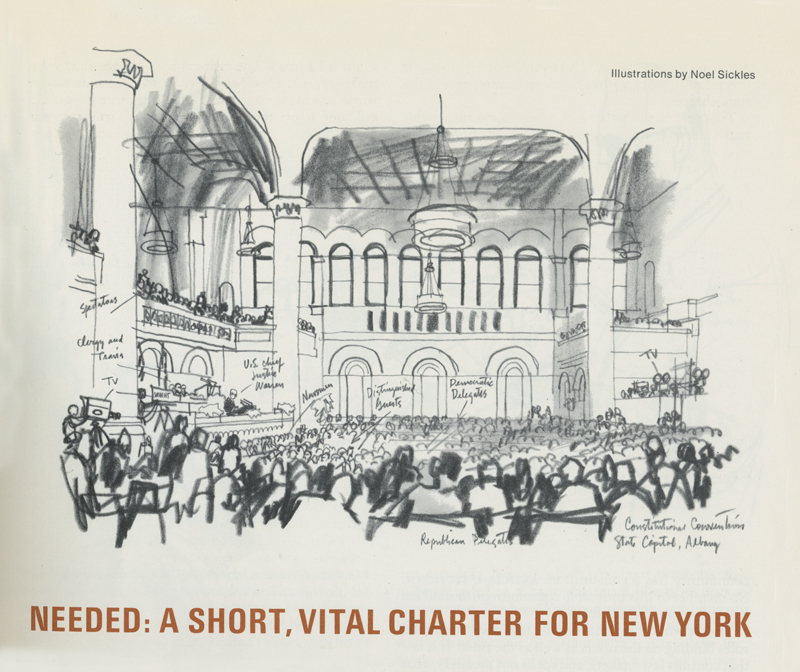

In Nick Meglin’s book “On-The-Spot Drawing", Noel Sickles noted:
“Styles change. Tastes change. Opinions change. Fashions and architecture change constantly. And as advances are made in chemistry, the materials themselves change, offering new and variable techniques, which are far removed from those available to artists of preceding years. But the drawings themselves, as well as the approaches to them, are timeless; timeless in that they express, very directly, the mobility of life and nature. It’s difficult, and often impossible, for other pictorial media to capture this feeling of mobility. The immediacy of a direct drawing or sketch seldom breaks through in the more static nature of other forms of art.”
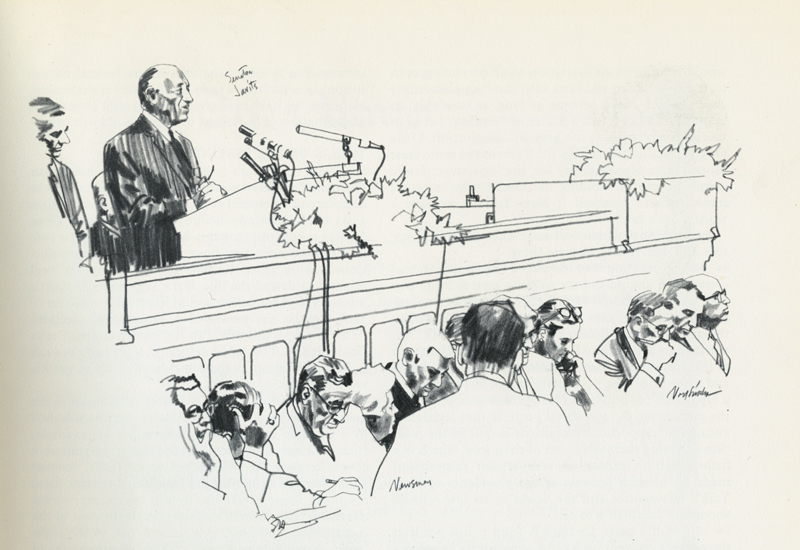
Lithopinion magazine hired Sickles to draw public figures at the New York State Senate in Albany.
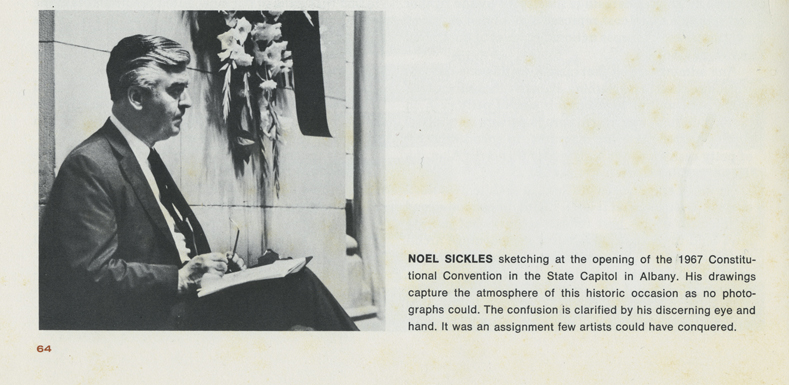
Sickles’s compositions were a delicate blend of detail and omission; what he drew was as important as what he left out.
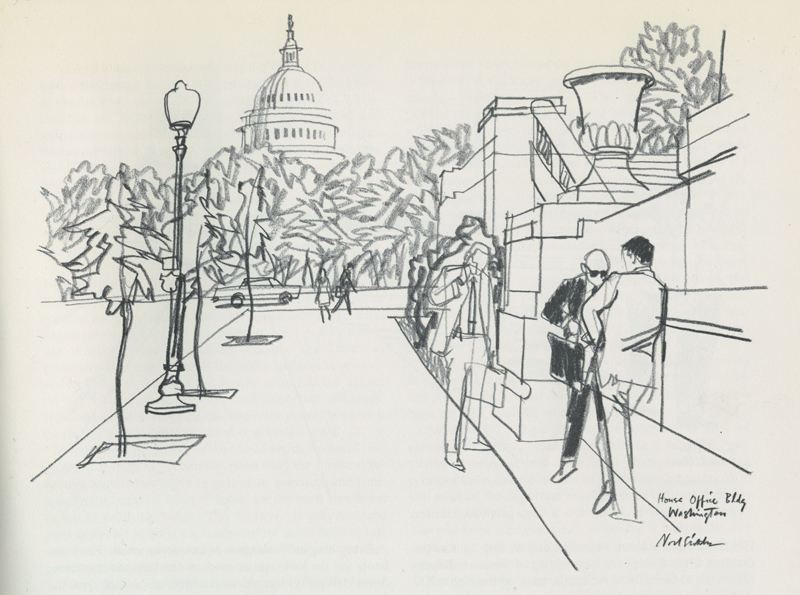

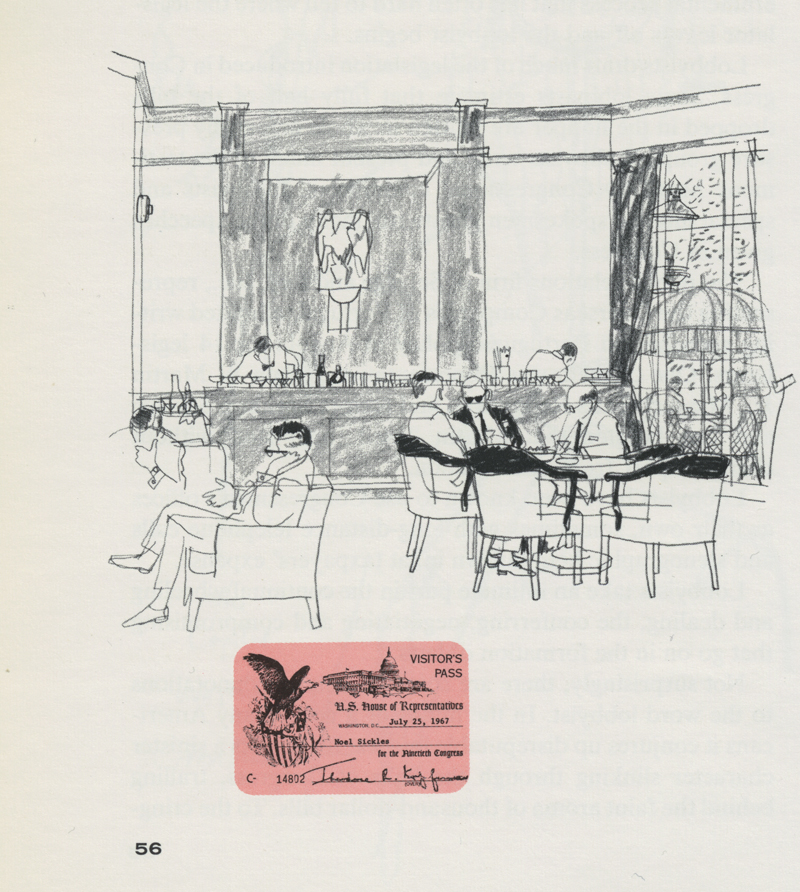
Sickles said “I will reduce things to basics or arrange them in a particular way, anything that will enable me to achieve that goal. An artist has the freedom to do this, his major advantage over the camera in the past and certainly in the present.”
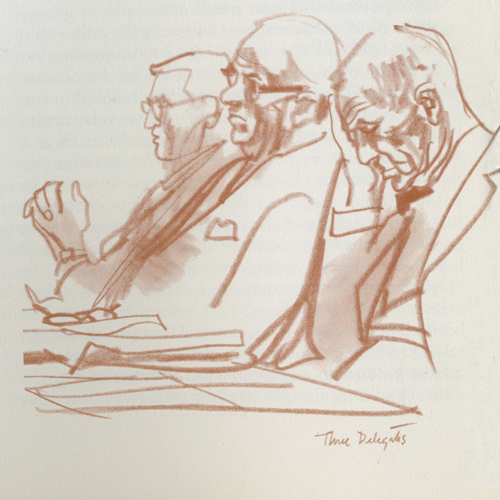
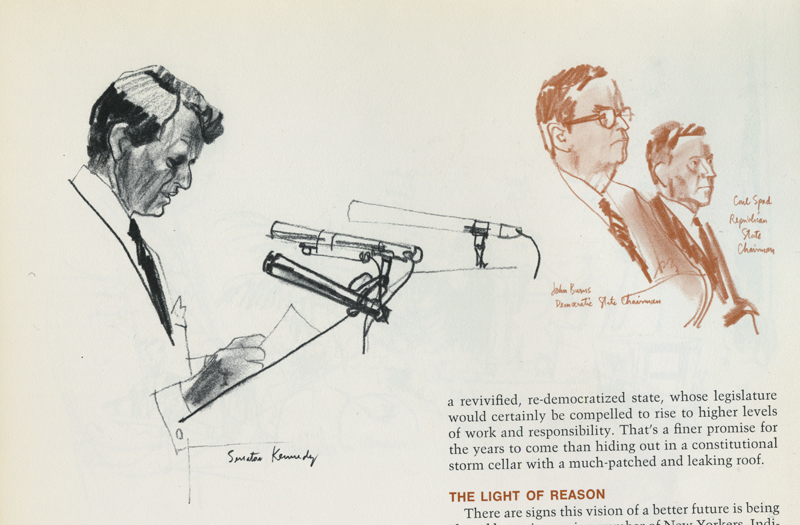
Another series for Lithopinion, this time by the illustrator Austin Briggs, was done at the Mourlot workshop in Paris. His drawings were created with lithographic crayons and tusche washes, tools normally used on stone or metal places in printmaking.
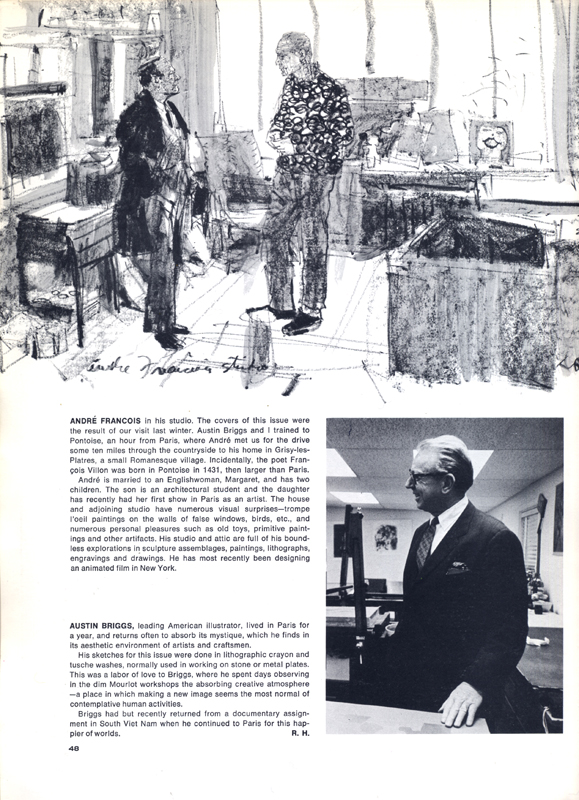
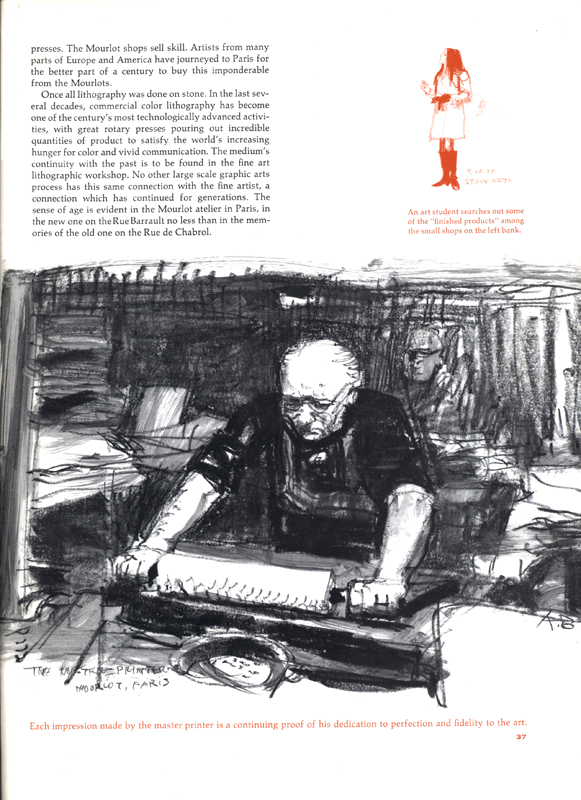
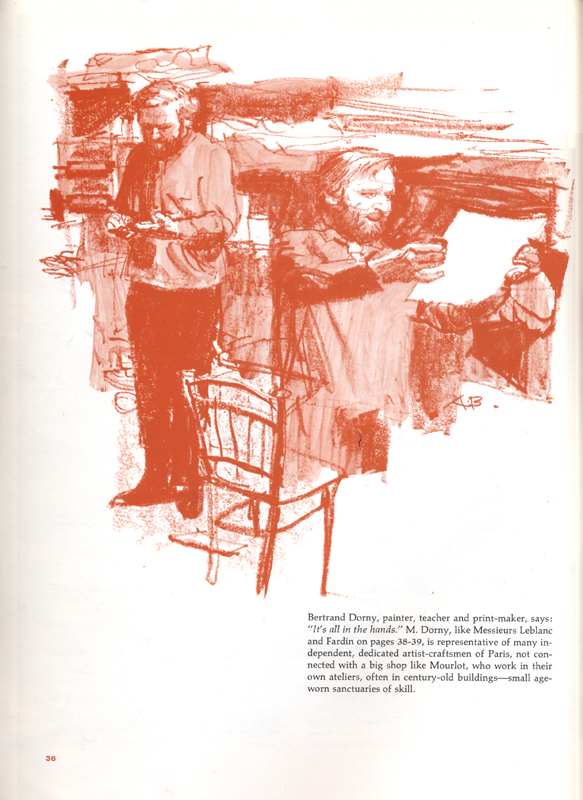
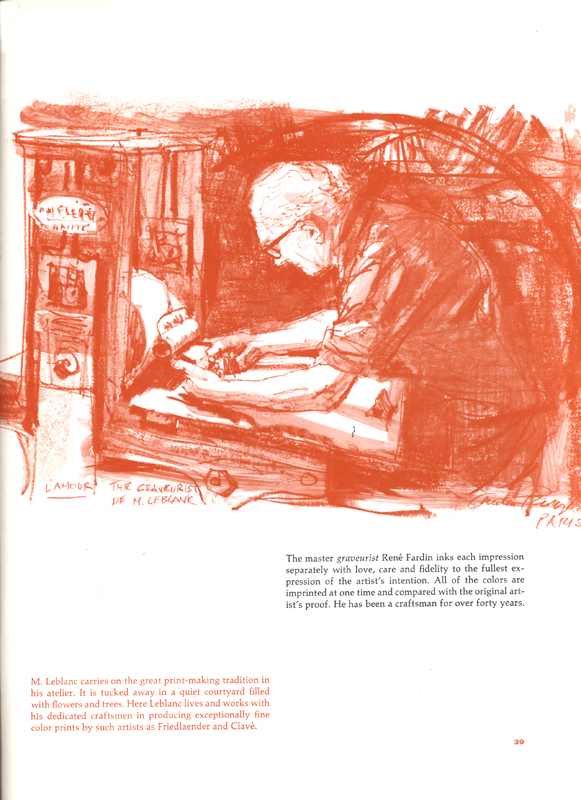
Direct drawing changed the illustration field. Sickles noted that prior to the advent of reportage in illustration, art directors and editors used to say, “Yes, fine. This is what we wanted. Now go home and do me a finished one”.
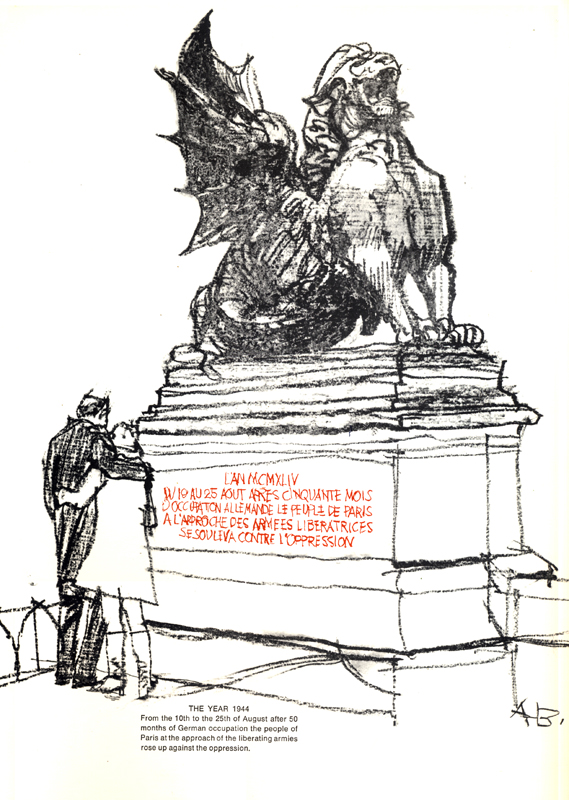
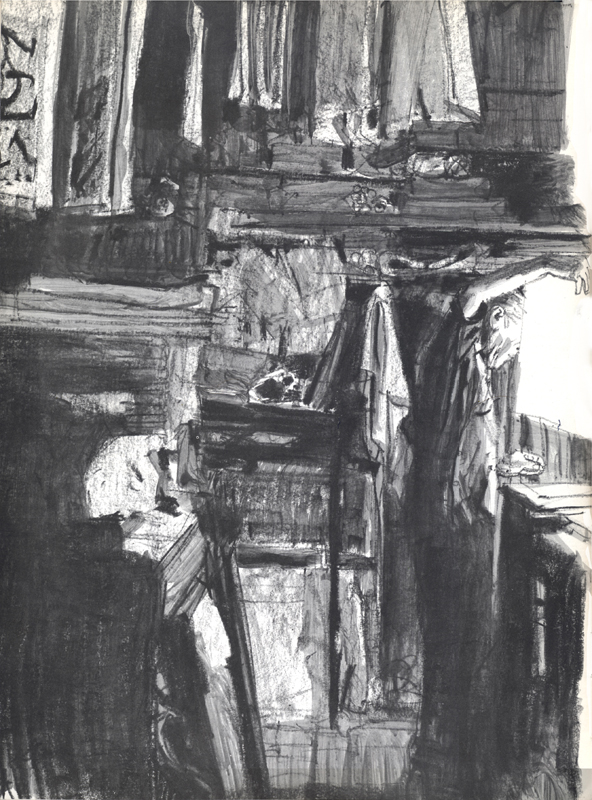
In the 1950’s and 60’s that mindset changed. “Today he says – ‘Yes, fine. This is what we wanted.’ Then he reaches over and rips it out of your sketchbook and prints it, charcoal smudges and all. It’s a wonderful feeling.”
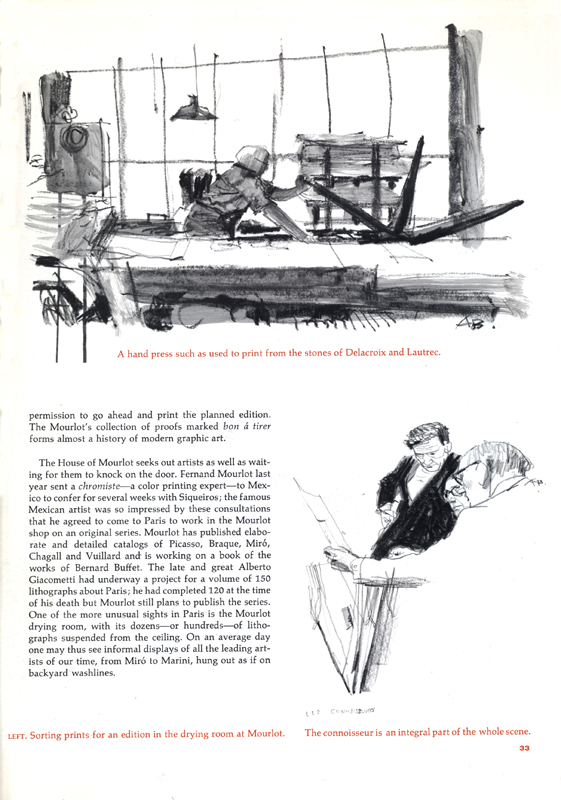

Continued tomorrow.
* Daniel Zalkus is an illustrator with a passion for on-the-spot drawing. You can see some of Daniel's own excellent work at his website.
* The Noel Sickles illustrations in today's post are courtesy of Matt Dicke






0 comments:
Post a Comment